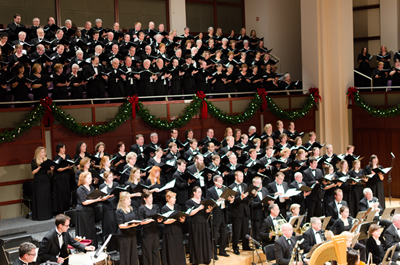Make no mistake about it, the Chamber Orchestra of the Triangle (COT) is an accomplished professional ensemble that performs at the highest level and can hold its own against fellow chamber orchestras like Orpheus and others. This is not the usual upper echelon expertise that you usually associate with a “community” orchestra, yet the COT is an organization that is decidedly community-minded. Almost all of the players are professional musicians who are committed to their art and would be able to step into any level orchestral job. There is an informal feel to these concerts that has much to do with the venue (the Carolina Theater, in downtown Durham) and the plain-spoken yet informative remarks by Conductor and Artistic Director Lorenzo Muti. Throw in affordable ticket prices and an after-concert reception with food and wine, and you have an afternoon that gives one a small-town feel with big-city talents. And judging by the program, the COT has a long and influential base of donors and supporters that show the community’s endorsement of this fine group.
The COT is a chamber orchestra in the truest sense of the word in that their small size and substantial talents create a sense of intimacy and precision that are more likely to be experienced by listening to a string quartet or woodwind quintet. They also have a history of presenting works that are usually ignored by full-blown symphony orchestras. The afternoon began with one such composition – the Chamber Symphony No. 2, by Arnold Schoenberg. Maestro Muti is well aware of the sense of panic and fear that usually accompanies the mention of the name “Schoenberg,” so he gave some very reassuring remarks prior to the performance. Such speeches can often come off as either overly condescending or pedantic, but his words – and a few musical examples – helped ward off pre-conceived prejudices against a composer who has been stuck with the “12-tone” label as his complete persona.
This is a work that Schoenberg began as a young man in the early 20th century but did not complete until the late 1930s, so it is not surprising that it is filled with the sounds of the dying embers of the late Romantic tradition that in some passages sound like Mahler. It is written with just an adagio followed by a con fuoco (“with fire/passion”) movement, and the COT breezed through the exceedingly complex score with a facility and cohesion that would be the envy of any of the household-name chamber orchestras. The first movement is as far from the pointillistic, angular creations of the 12-tone school as you can get. This is sensuous, lush, and melodic writing that is an organic and logical outgrowth of the great German Romantic tradition. The second and final movement is a virtuoso romp in the tradition of a concerto for orchestra. There was no hiding or rest for soloists or sections as the COT engaged in some of the finest playing I have heard from this group. It was interesting to hear overwhelmingly favorable comments by many in attendance afterwards. Like any successful artistic event, this one helped clear out some inaccurate myths and gained some converts to Mr. Schoenberg.
Unlike Schoenberg, the other work on this shorter-than-usual program was a composition that is almost the polar opposite in both temperament and popularity. The Symphony in C Major was written by the 17-year-old Georges Bizet, and it has gone on to become one of his most often-played non-Carmen works. Its unrelenting, sunny, Mediterranean feel is as far away from the cerebral angst of Schoenberg as Michael Moore is from George W.
Bizet’s student symphony is such a favorite of classical radio stations that I find myself turning it off, so I was not overly thrilled to see it programmed, but watching and hearing a great performance is almost always enlightening, and this was no exception. While by no means in the same league as other teenage miracles – Mendessohn’s Octet comes to mind – this is a lovely work with beautiful themes, but it suffers from a lack of development and unrelenting repetition. The first movement is the worst culprit, and ironically it was these repeated passages that gave the first violin section the most trouble of the entire afternoon – perhaps from zoning out after the 20th time playing it. The second movement is the jewel of the symphony, and oboist Bo Newsome deserves special praise. Incredibly long lines were so seamlessly played that you wondered if he would suffer oxygen deprivation to his brain. I can’t say that I wanted to rush home to listen to this work again, but while the COT played it, I was totally captured by the optimism and youthfulness – and by the ensemble’s overall technical polish. When a creator or performer engages you in a way that the COT did, that is art at its best.












